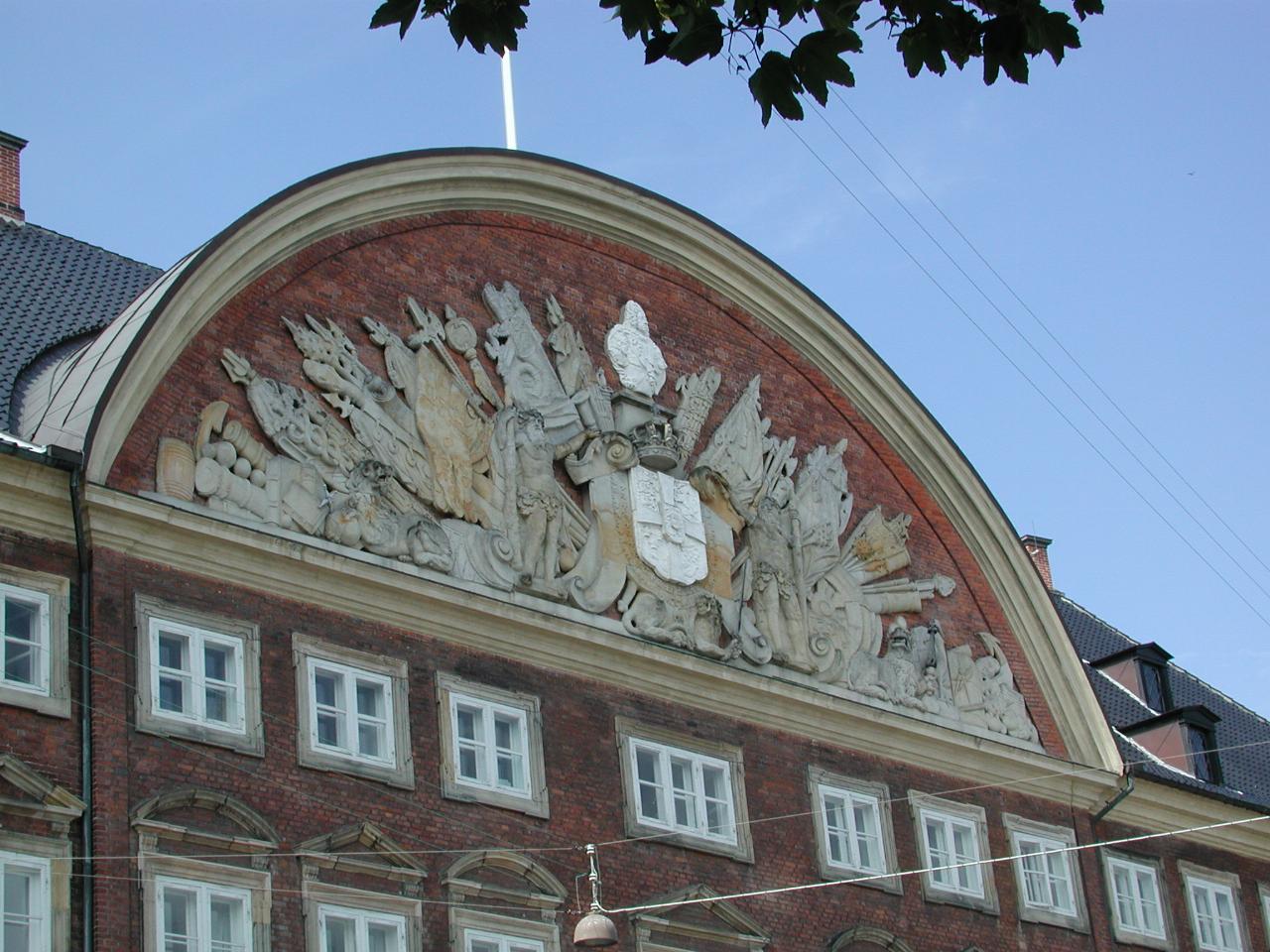
The bus threaded its way through the traffic chaos resulting from the reconstruction of Kongens Nytorv to eventually drop us off at the back of the Borsen (stock exchange, although originally more a goods exchange when established by Christian the Fourth in 1640). Christiansborg is an area as well as a castle, though not a castle in the traditional sense of fortified walls. Well, at least not now, anyway.
Initial construction was begun by Archbishop Absalon (founder of Copenhagen) in 1167, but was destroyed in 1249 by armies from Lubek and in 1369 by the Hanseatic League (more about them in Bergen, Norway, later). Twenty years later, the castle was rebuilt by the Archbishop of Roskilde. It was later chosen by Henry VII of Pomerania as his royal residence. Before long it proved unsuitable for the royal court, so in 1687 Christian V began a complete renovation which was finished by Christian VI.
The result was a building with 350 rooms, inaugurated in 1766 for the wedding of Christian VII with Princess Caroline Mathilda of Great Britain. However, this building has a long history of being destroyed by fire, and this includes 1794, and again in 1795 by a city wide fire. Demolition followed in 1803 and rebuilding in 1828, and another fire in 1884. The present building was designed in 1907.
The castle is on a man made island, which was formed when a canal was dug around three sides of the existing structure.

Our tour bus stopped in front of this building on Slotsholmsgade. The map I have shows this building as "Ministerial bygningerne", which Google translates as "Ministerial buildings". These days this castle is the home of parliament.
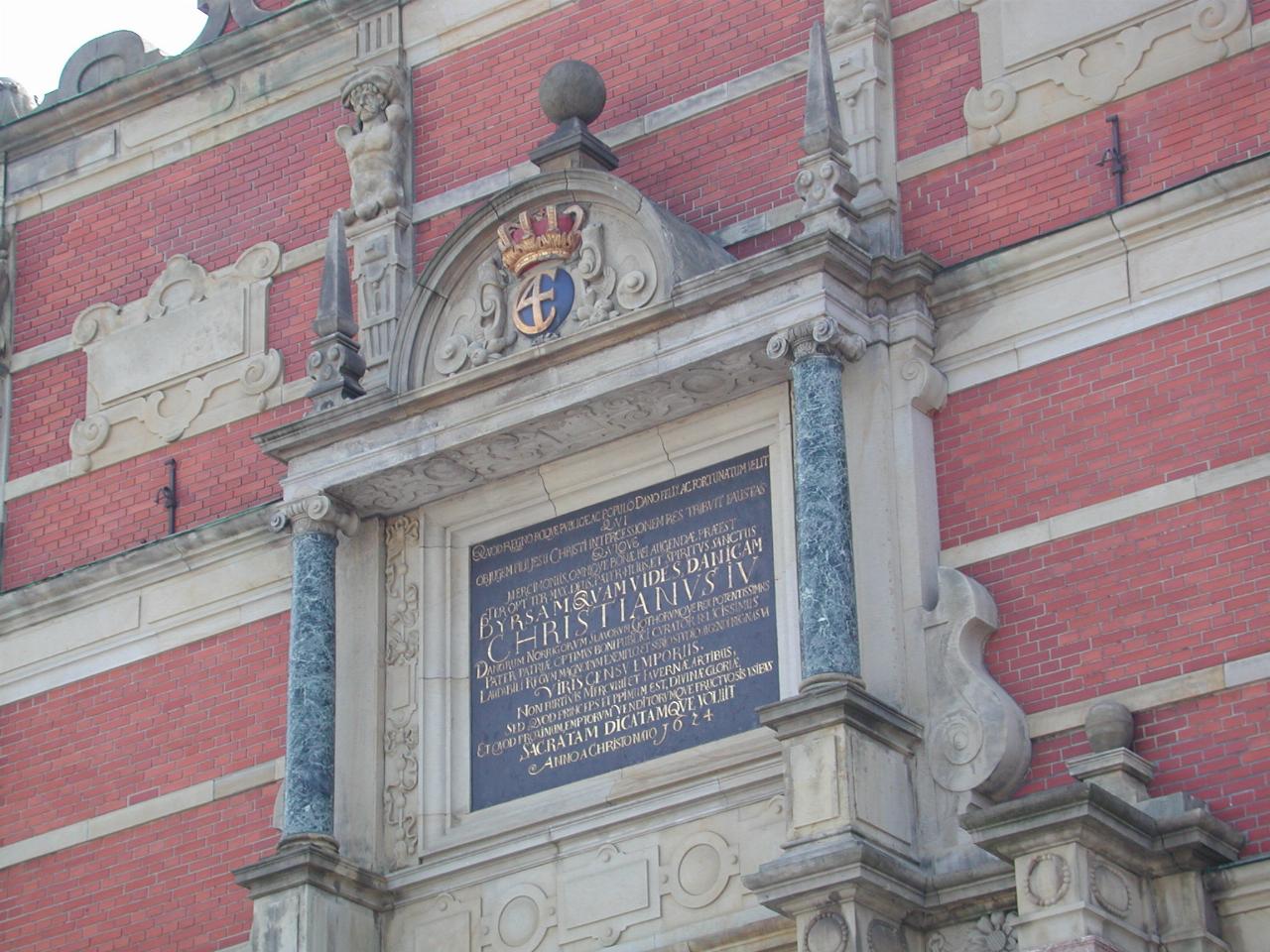
The commemoration plaque on the side of the Borsen, showing it was built in 1624 by Christian IV. Construction was between 1619 and 1640, with most work during the 1620s.
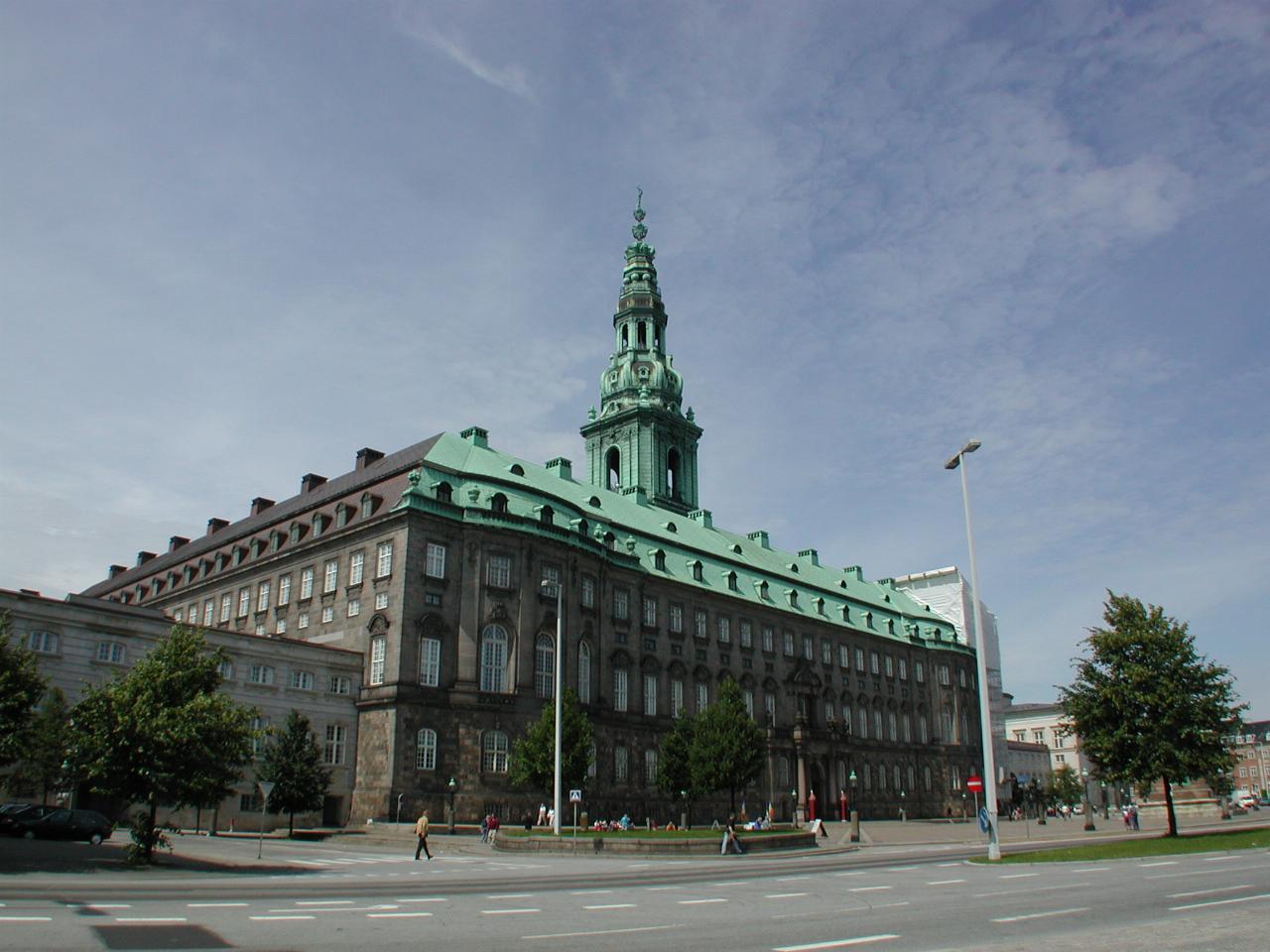
Full frontal view of Christiansborg Castle. This is the eastern side, and is part of the parliamentary area.
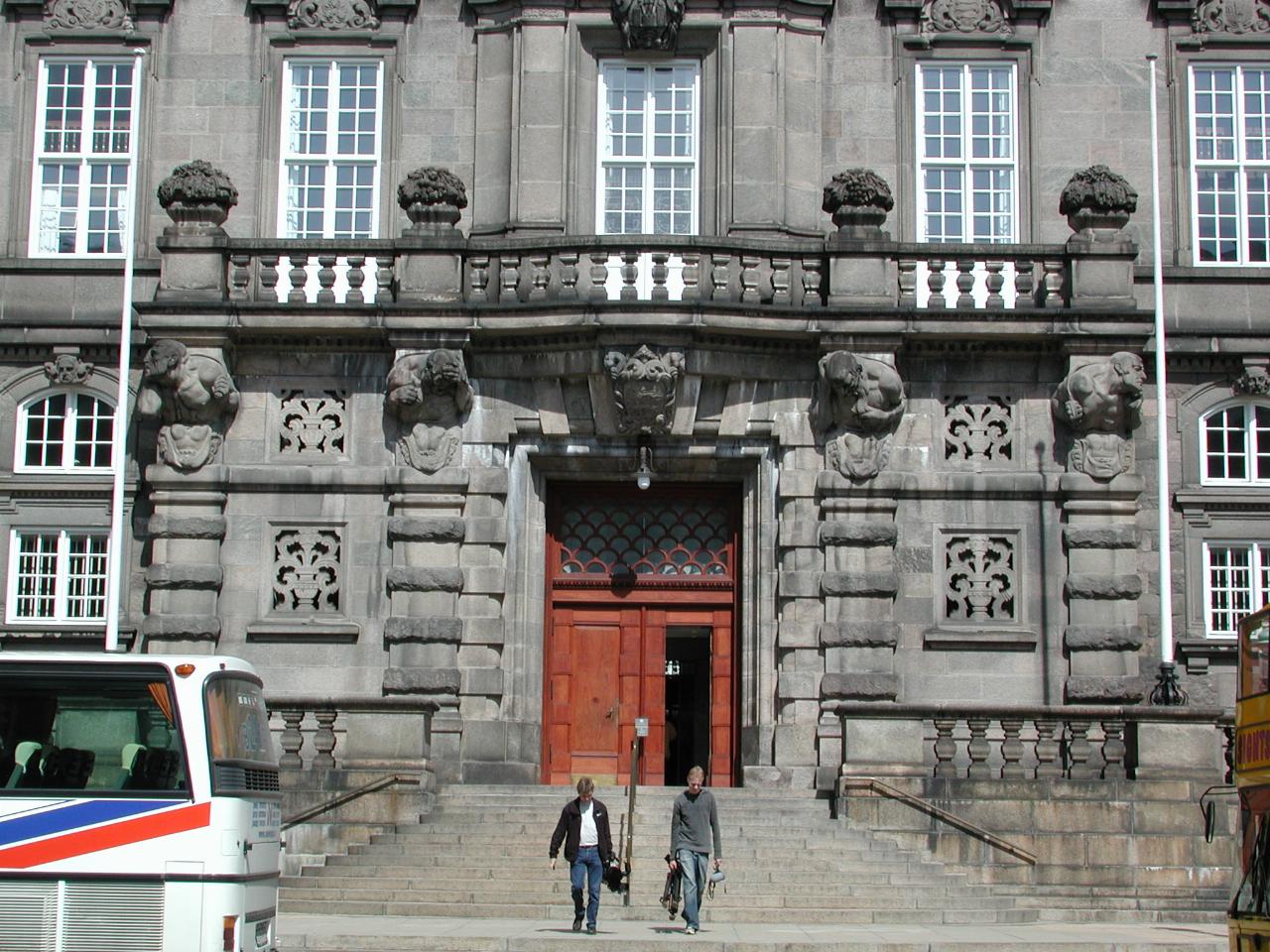
The south side entrance to Christiansborg Castle. This entrance is to the parliament. Note the stone carvings above the entrance.
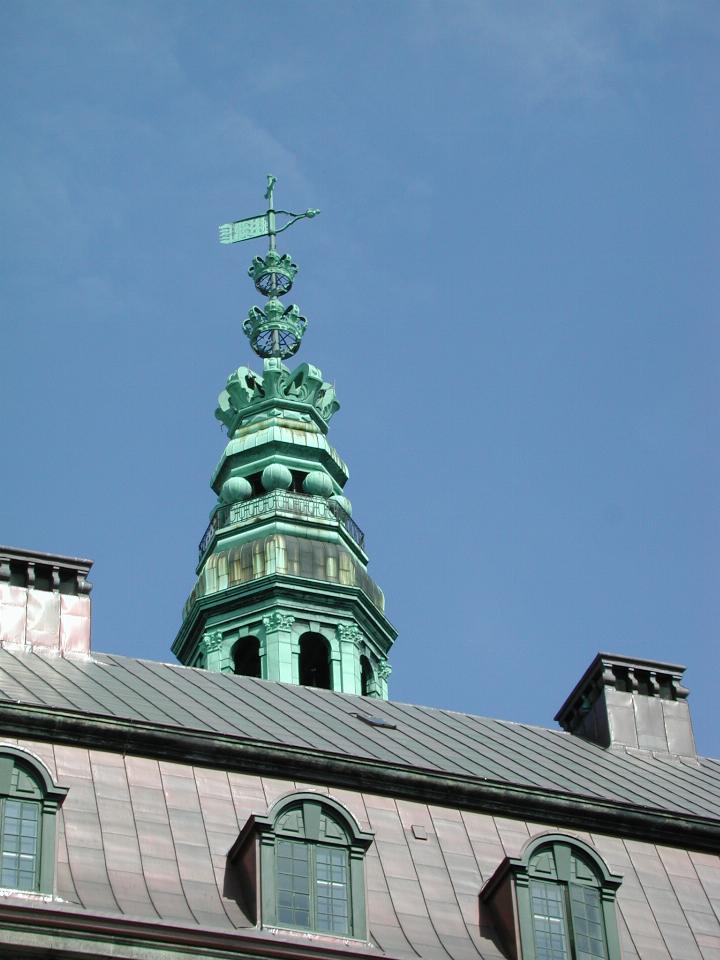
The tower of Christiansborg Castle. Somebody mentioned that the crowns are to symbolise the three countries of Denmark, Norway and Sweden, which at one time were all under Danish control.
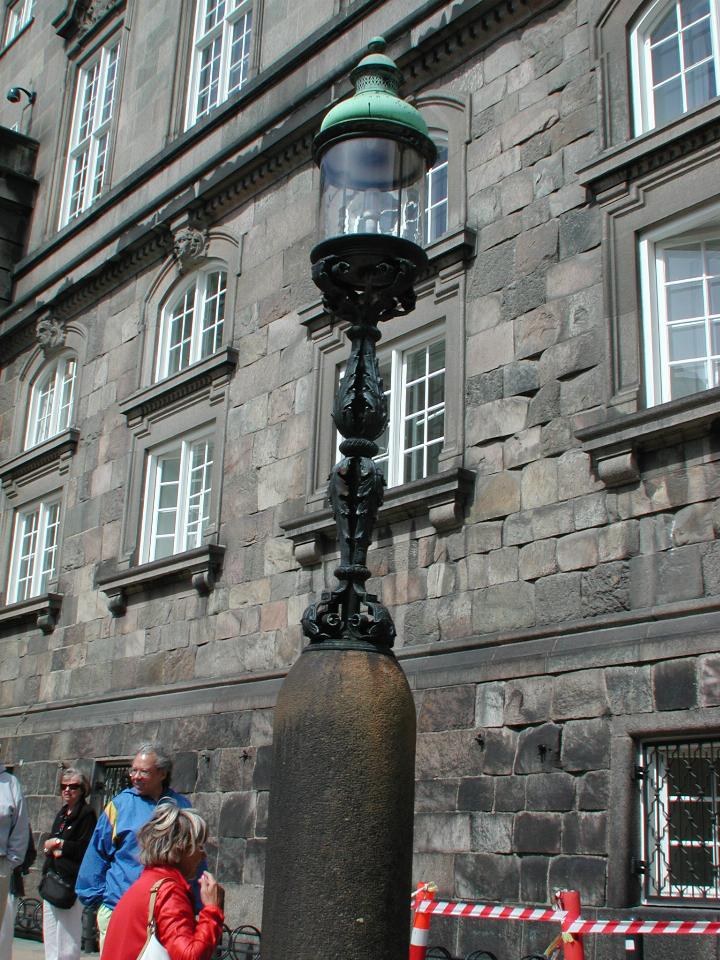
These decorative lamps surround the Castle, but they are quite modern in terms of the inside. And energy efficient.
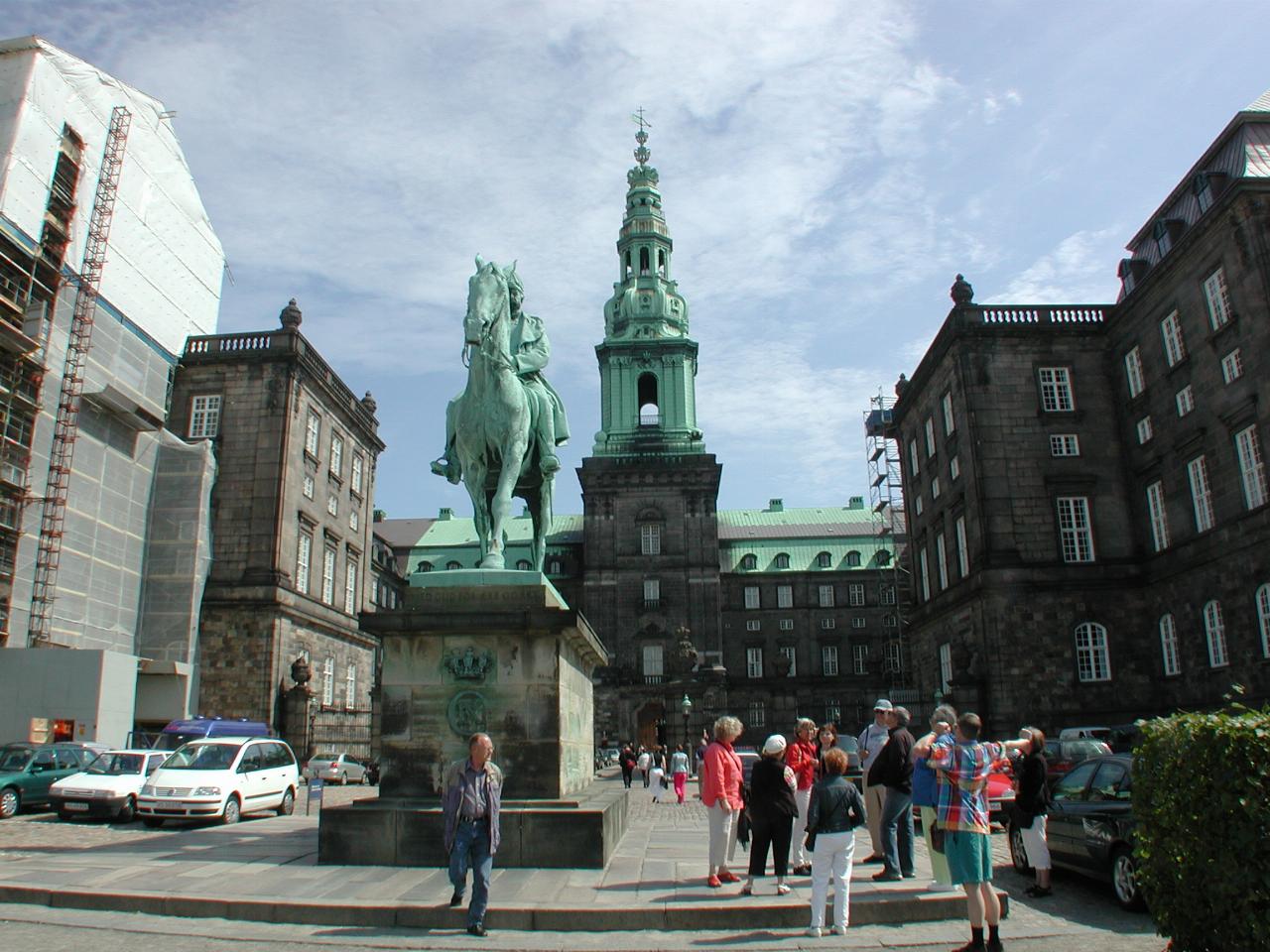
The palace has three wings, in a U shaped arrangement. This view is looking into the top of the "U", so to speak. The wing on the left (partially covered during renovation). Parliament occupies the rear and right wings, while the left (north) wing contains ceremonial rooms for special occasions. The statue is of Christian IX and overlooks the riding stables and arena.
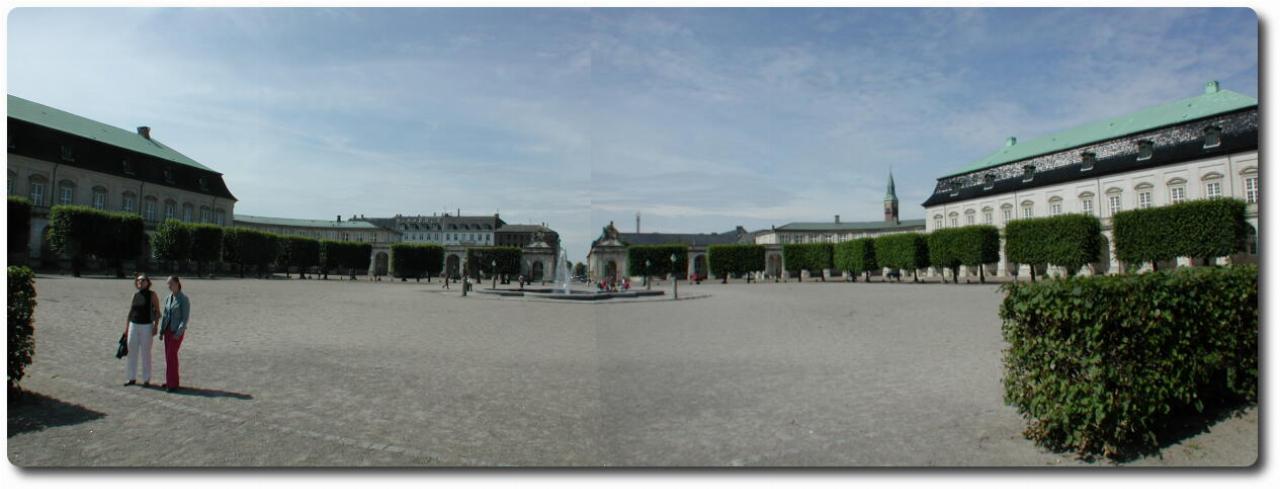
A panorama view of the riding stables and arena, mentioned above. The "pipe" appearing just right of centre is part of Tivoli Gardens, and the clock tower to the right of that I think belongs to the Town Hall.